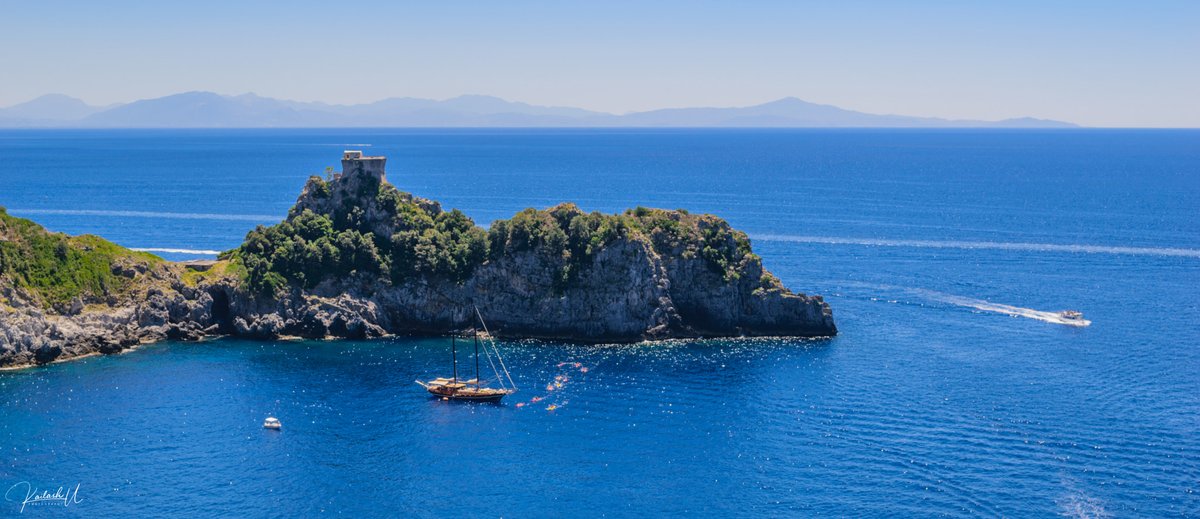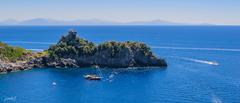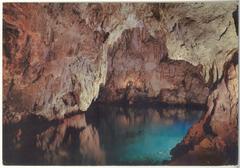
Guide to Visiting the Amalfi Coast, Italy
Date: 16/07/2024
Introduction
The Amalfi Coast, a breathtaking stretch of coastline in the Campania region of Italy, is celebrated for its dramatic cliffs, charming villages, and rich historical tapestry. Recognized as a UNESCO World Heritage Site, this region has captivated visitors for centuries with its unique blend of natural beauty and cultural heritage. From ancient maritime republics to modern-day tourism, the Amalfi Coast offers a plethora of experiences that cater to history buffs, nature lovers, and culinary enthusiasts alike (UNESCO).
Table of Contents
- [Introduction](#introductionintroduction)
- [Ancient Origins and Early Settlements](#ancient-origins-and-early-settlementsancient-origins-and-early-settlements)
- [The Rise of the Maritime Republic](#the-rise-of-the-maritime-republicthe-rise-of-the-maritime-republic)
- [Decline and Foreign Domination](#decline-and-foreign-dominationdecline-and-foreign-domination)
- [The Renaissance and Baroque Periods](#the-renaissance-and-baroque-periodsthe-renaissance-and-baroque-periods)
- [The 19th and 20th Centuries - A Tourist Destination](#the-19th-and-20th-centuries---a-tourist-destinationthe-19th-and-20th-centuries---a-tourist-destination)
- [World War II and Post-War Recovery](#world-war-ii-and-post-war-recoveryworld-war-ii-and-post-war-recovery)
- [Modern-Day Significance](#modern-day-significancemodern-day-significance)
- [Visitor Information](#visitor-informationvisitor-information)
- [Opening Hours and Tickets](#opening-hours-and-ticketsopening-hours-and-tickets)
- [Travel Tips](#travel-tipstravel-tips)
- [Special Events and Guided Tours](#special-events-and-guided-toursspecial-events-and-guided-tours)
- [Photographic Spots](#photographic-spotsphotographic-spots)
- [Conclusion](#conclusionconclusion)
- [FAQ](#faqfaq)
- [References](#referencesreferences)
Exploring the Rich History of the Amalfi Coast - From Ancient Settlements to Modern-Day Tourism
Ancient Origins and Early Settlements
The Amalfi Coast boasts a rich history dating back to ancient times. Initially settled by the Etruscans and later by the Greeks, who established colonies along the coast, the strategic location of the Amalfi Coast made it a significant maritime hub in the Mediterranean. Archaeological evidence suggests that the region was inhabited as early as the 6th century BCE, with the town of Amalfi itself being founded around the 4th century BCE.
The Rise of the Maritime Republic
During the 9th and 11th centuries, Amalfi emerged as a powerful and independent maritime republic, rivalling other Italian city-states such as Venice, Pisa, and Genoa. The Republic of Amalfi was renowned for its naval prowess and commercial acumen, establishing trade routes that extended as far as the Middle East and North Africa.
Amalfi’s maritime code, known as the “Tabula Amalphitana,” was one of the earliest codifications of maritime law and was widely respected throughout the Mediterranean. The republic’s wealth and influence were reflected in its impressive architecture, including the construction of the Amalfi Cathedral, dedicated to Saint Andrew, the patron saint of Amalfi (Centro di Cultura e Storia Amalfitana).
Decline and Foreign Domination
The decline of the Maritime Republic of Amalfi began in the 12th century, primarily due to the rise of rival maritime powers and internal strife. In 1137, the republic was conquered by the Normans, marking the end of its independence. Subsequently, the Amalfi Coast came under the control of various foreign powers, including the Kingdom of Sicily, the Aragonese, and the Spanish.
The Renaissance and Baroque Periods
During the Renaissance and Baroque periods, the Amalfi Coast experienced a cultural and artistic revival. The region’s towns and villages saw the construction of numerous churches, palaces, and villas, many of which still stand today. Notable examples include the Church of Santa Maria Assunta in Positano and the Villa Rufolo in Ravello.
The 19th and 20th Centuries - A Tourist Destination
The 19th century marked the beginning of the Amalfi Coast’s transformation into a popular tourist destination. The region’s picturesque landscapes, mild climate, and historical charm attracted writers, artists, and travelers from across Europe. Notable figures such as Richard Wagner, Henrik Ibsen, and John Steinbeck visited the Amalfi Coast, drawing inspiration from its beauty.
The construction of the Amalfi Drive (Strada Statale 163) in the early 20th century further facilitated tourism by providing easier access to the region. The road, which winds along the cliffs and offers breathtaking views of the coastline, is considered one of the most scenic drives in the world.
World War II and Post-War Recovery
During World War II, the Amalfi Coast was occupied by German forces, and the region suffered significant damage. However, the post-war period saw a rapid recovery, with efforts to restore and preserve the area’s historical and cultural heritage. The establishment of the Amalfi Coast as a UNESCO World Heritage Site in 1997 recognized its outstanding universal value and helped to promote sustainable tourism and conservation efforts.
Modern-Day Significance
Today, the Amalfi Coast is celebrated for its unique blend of natural beauty, historical significance, and cultural richness. The region’s towns and villages, such as Amalfi, Positano, Ravello, and Praiano, continue to attract millions of visitors each year. The Amalfi Coast’s historical sites, including the Amalfi Cathedral, the Villa Rufolo, and the ancient ruins of Pompeii and Herculaneum, offer a glimpse into the region’s storied past (Italia.it).
Visitor Information
Opening Hours and Tickets
- Amalfi Cathedral: Open daily from 9 AM to 7 PM. Tickets are €3.
- Villa Rufolo: Open daily from 9 AM to 8 PM. Tickets are €7.
- Pompeii: Open daily from 9 AM to 7:30 PM. Tickets are €15.
Travel Tips
- Best Time to Visit: The best time to explore the Amalfi Coast is during the spring (April to June) and fall (September to October) when the weather is pleasant, and the crowds are smaller.
- Getting There: The closest airport is Naples International Airport. From there, you can take a bus, train, or rent a car to reach the Amalfi Coast.
- Accessibility: The Amalfi Coast can be challenging to navigate for those with mobility issues due to its steep terrain and narrow streets. However, many attractions are accessible, and there are guided tours available that cater to different needs.
Special Events and Guided Tours
Special Events
- Ravello Festival: An annual music and arts festival held in the summer, featuring concerts, dance performances, and art exhibitions (Ravello Festival).
- Feast of Saint Andrew: Celebrated on November 30th, this festival includes religious processions, fireworks, and local delicacies.
Guided Tours
- Historical Walking Tours: Explore the rich history of towns like Amalfi and Ravello with knowledgeable guides.
- Boat Tours: Discover the stunning coastline and hidden coves with a boat tour.
- Food and Wine Tours: Experience the culinary delights of the region with a guided food and wine tour.
Photographic Spots
- Positano: Capture the iconic view of colorful houses cascading down the cliffside.
- Ravello: The gardens of Villa Rufolo and Villa Cimbrone offer stunning panoramic views.
- Amalfi Drive: Take scenic photos along the winding coastal road with breathtaking vistas.
Conclusion
The Amalfi Coast stands as a timeless testament to Italy’s rich historical and cultural legacy. From its ancient settlements and the rise of the Maritime Republic to its transformation into a modern tourist destination, this region offers a unique blend of natural beauty, historical significance, and cultural richness. Visitors are drawn to its picturesque landscapes, historical landmarks such as the Amalfi Cathedral and Villa Rufolo, and vibrant festivals like the Ravello Festival and the Feast of Saint Andrew (Regata delle Antiche Repubbliche Marinare). The region’s culinary delights, including limoncello and seafood pasta, further showcase its agricultural and maritime heritage. As a UNESCO World Heritage Site, the Amalfi Coast continues to captivate and inspire travelers from around the world, offering a glimpse into its storied past while providing a myriad of experiences for modern-day explorers (Italia.it). Whether you’re drawn by its historical allure, natural beauty, or cultural vibrancy, the Amalfi Coast promises an unforgettable journey through one of Italy’s most enchanting regions.
FAQ
Q: What are the visiting hours for the Amalfi Coast’s main attractions?
- A: The Amalfi Cathedral is open daily from 9 AM to 7 PM. Villa Rufolo is open daily from 9 AM to 8 PM. Pompeii is open daily from 9 AM to 7:30 PM.
Q: How much do tickets cost for the main attractions?
- A: Tickets for the Amalfi Cathedral are €3, for Villa Rufolo are €7, and for Pompeii are €15.
Q: What is the best time to visit the Amalfi Coast?
- A: The best time to visit is during the spring (April to June) and fall (September to October) when the weather is pleasant, and the crowds are smaller.
Q: How can I reach the Amalfi Coast?
- A: The closest airport is Naples International Airport. From there, you can take a bus, train, or rent a car to reach the Amalfi Coast.
Q: Are there guided tours available?
- A: Yes, there are historical walking tours, boat tours, and food and wine tours available.
References
- UNESCO World Heritage Centre. (n.d.). Amalfi Coast. https://whc.unesco.org/en/list/830/
- Centro di Cultura e Storia Amalfitana. (n.d.). http://www.centrodiculturaestoriaamalfitana.it/
- Regata delle Antiche Repubbliche Marinare. (n.d.). https://www.repubblichemarinare.org/
- Italia.it. (n.d.). Amalfi Coast. https://www.italia.it/en/campania/amalfi-coast




